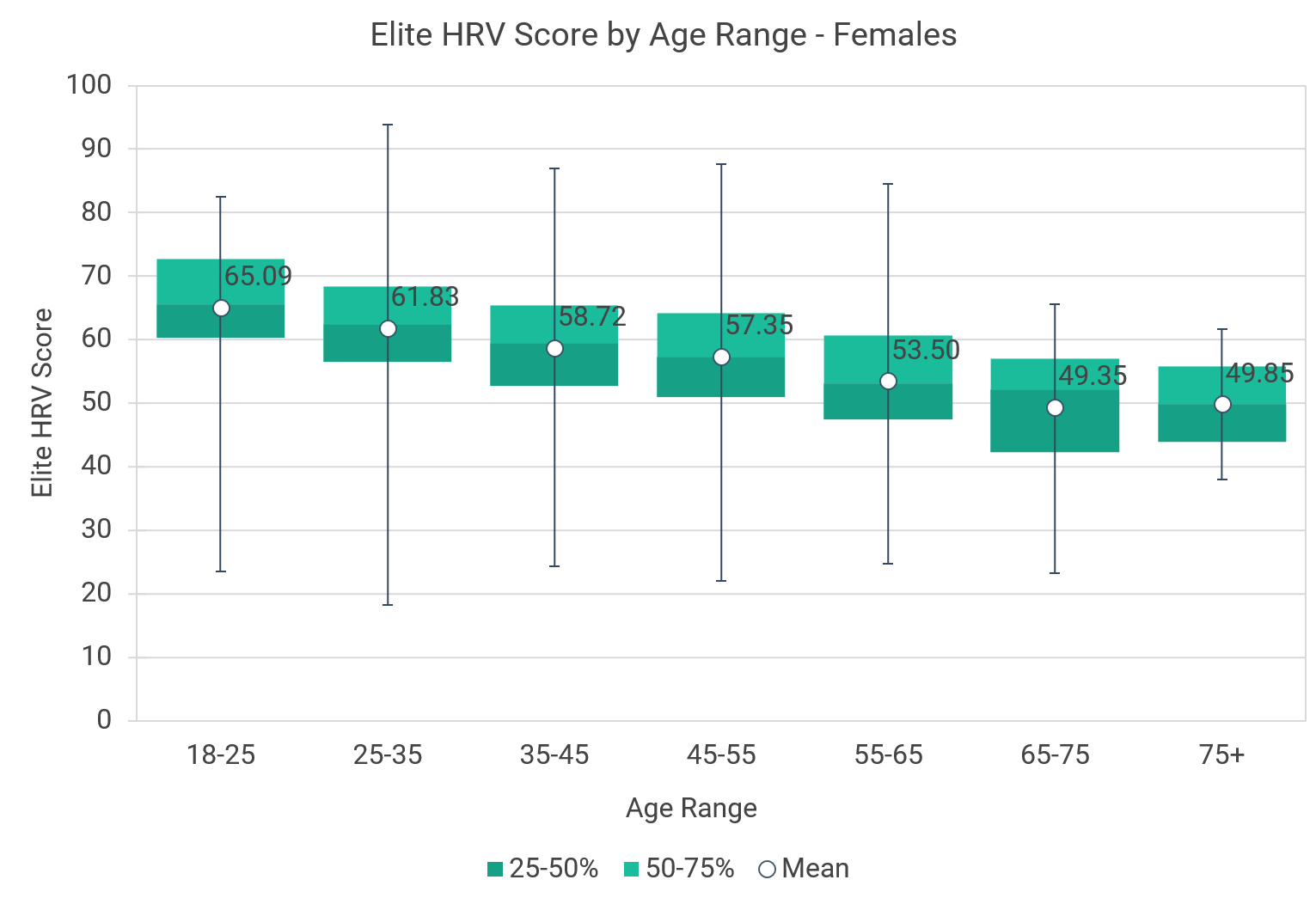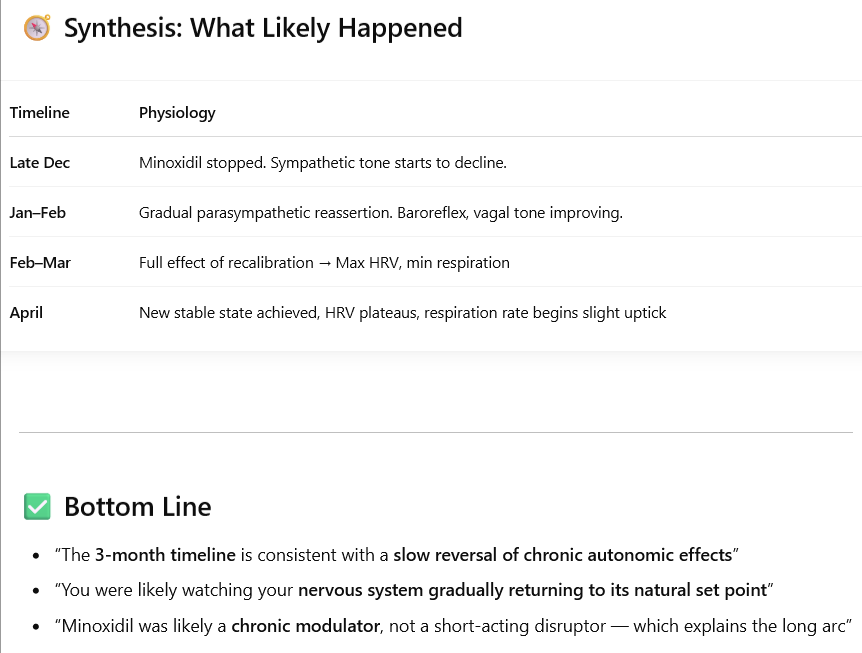HRV - the Variable aspect of this measurement is exactly that, highly variable. As it should be, sometimes low, sometimes high variability.
This is why it’s useless to measure HRV in an ongoing manner (hour by hour, minute by minute), it’s basically meaningless. Walk a bit, sit a bit, work out, sleep, the HRV will vary significantly and not tell you anything useful.
But if you measure HRV 1 time a day, at close to the same time, under the “same” conditions, you can establish a trend. Spot HRV measurement is meaningless, I feel that the trend of 1 single daily measurement on the other hand has meaning.
What got me interested in HRV was using it as an indicator of ANS status, parasympathetic vs sympathetic. As we age the ANS becomes more sympathetic, this causes a number of issues both mental and physical.
When I started measuring it I found mine to be low - 40 to 47 over the first week of testing. Then I started tVNS, my HRV increased, my system became more consistently parasympathetic, my HRV increased to 57+ and is holding at that number for over 3 years now.
The app I use is used by a lot of fitness people, I’m not that. Yet I scored above average for my age group. Certainly not because I was fit LoL! I was obese and very low on the fitness scale during that process. Today, I’m not obese and my fitness level is getting much better. And interestingly my HRV has not “improved” through that 14 month transformation.
So I’ll keep doing tVNS 3 to 4 times a week, when there is a hockey game on, Go Leafs Go!








